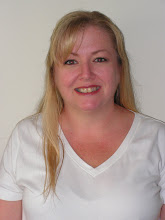

This is a photo of my grandfather from the book that my dad donated to the library in Kew/Richmond. Grandpa served with the U.S. Army's 660th Engineers Topographical Battalion, B Company, which during World War II was stationed in Kew, London, England. The United Kingdom's National Archives now sits on the same location where the 660th served. B Company's work was photomapping. They made maps of France from aerial photographs in preparation for the invasion of Normandy. The first U.S. soldiers arrived at Kew in September 1942 and the last ones left in October of 1944.
In January 1945 the site became home to former Italian prisoners of war. After Italy became an ally, the Italians helped to rebuild bombed locations in London while waiting to be repatriated.

Ruskin Avenue and the Second World War
"The land on which these buildings stand was originally called Kew Meadows. In 1916 a large, single-story complex was built here to house the Claims and Records Office of the Ministry of Labour. It was evacuated in 1939, just after the start of the war.
In November 1942, an American Topographical Battalion moved in. Their job was to turn aerial photographs of Northern France and the Normandy beaches into detailed maps for use in the D-Day landings in June 1944. Millions of maps were printed.
The American soldiers also took part in training exercises and marched in Richmond parades supporting war bond sales. The soldiers enjoyed fraternizing with Kew residents and several took local British brides home to the United States.
Despite numerous air raid warnings, the building on the site only once took a direct hit from a V-1 rocket. Three men were killed.
In the autumn of 1944, the Americans moved to France. Early the next year, they were replaced by an Italian Labour Italian, created from former prisoners of war. The men worked clearing London bomb sites until they were repatriated in 1946.
A handful of German prisoners of war were later held here for a short period. "

This is the way the site looks now. This site sits at the end of Ruskin Avenue in Kew.

There were at least 100 people present for the unveiling of the plaque, many of them local residents. A fair number of them were probably living there during the war.

Sadly, my grandfather passed away October of 1993, before I had any kind of appreciation whatsoever of history. I wish I had asked him more about his time serving in the war. I miss him every day, and I'm grateful I was able to see where he spent his time during the War and learn a little bit about his life there.













No comments:
Post a Comment